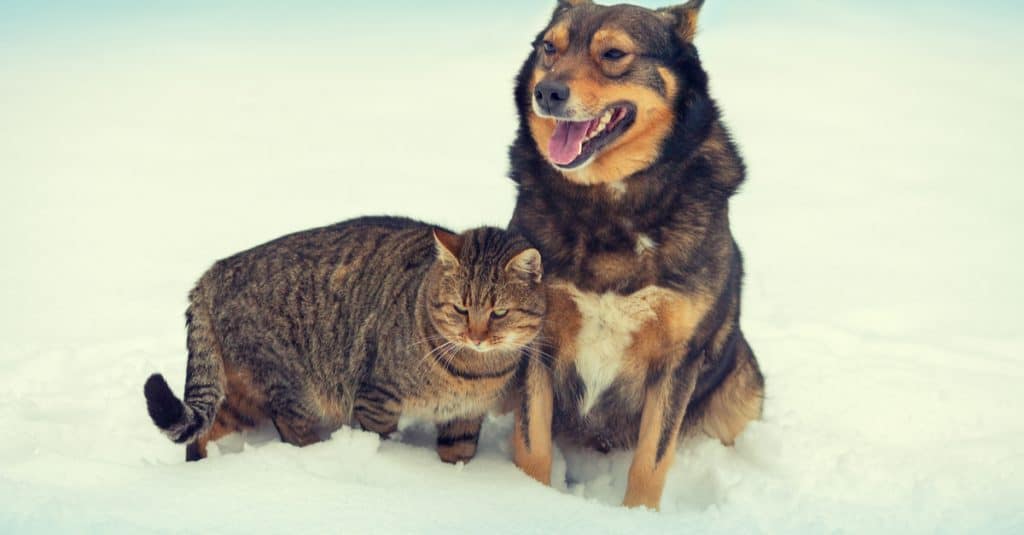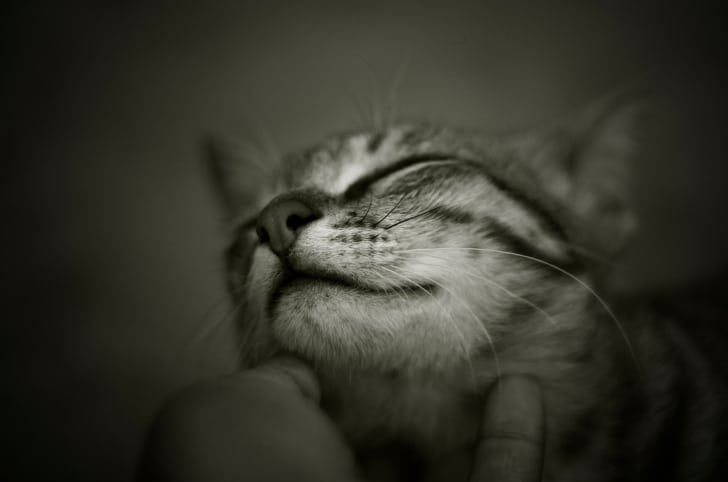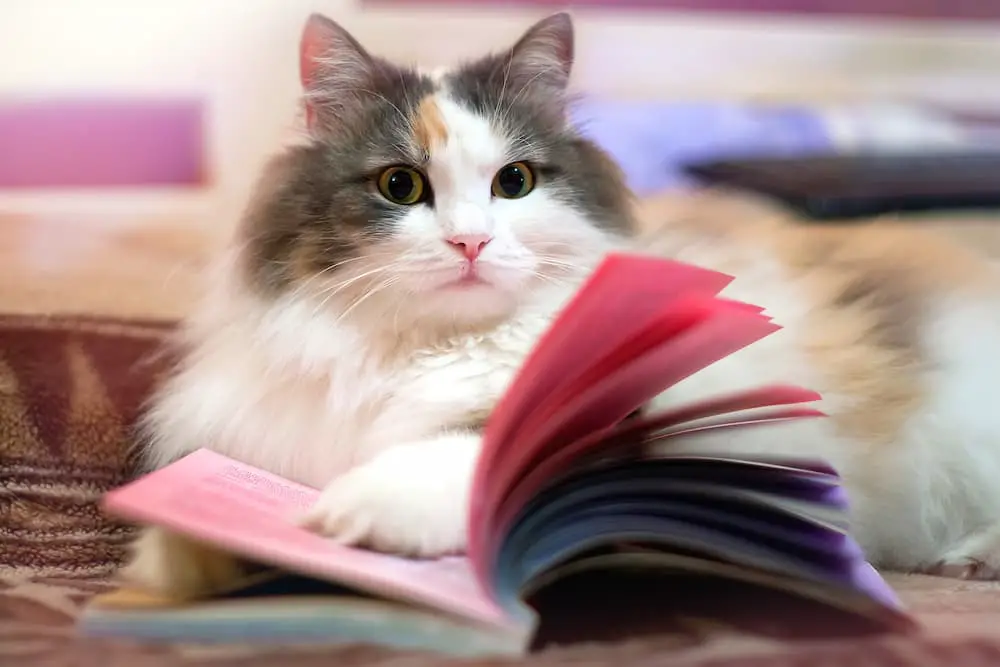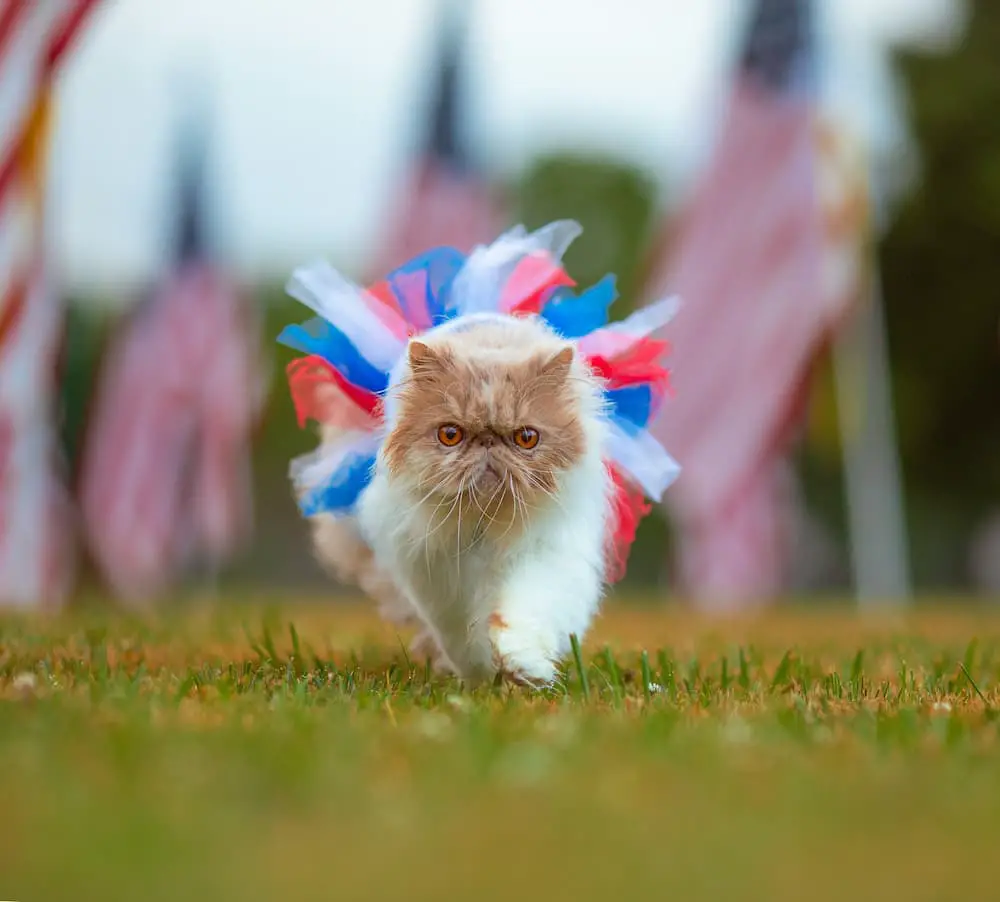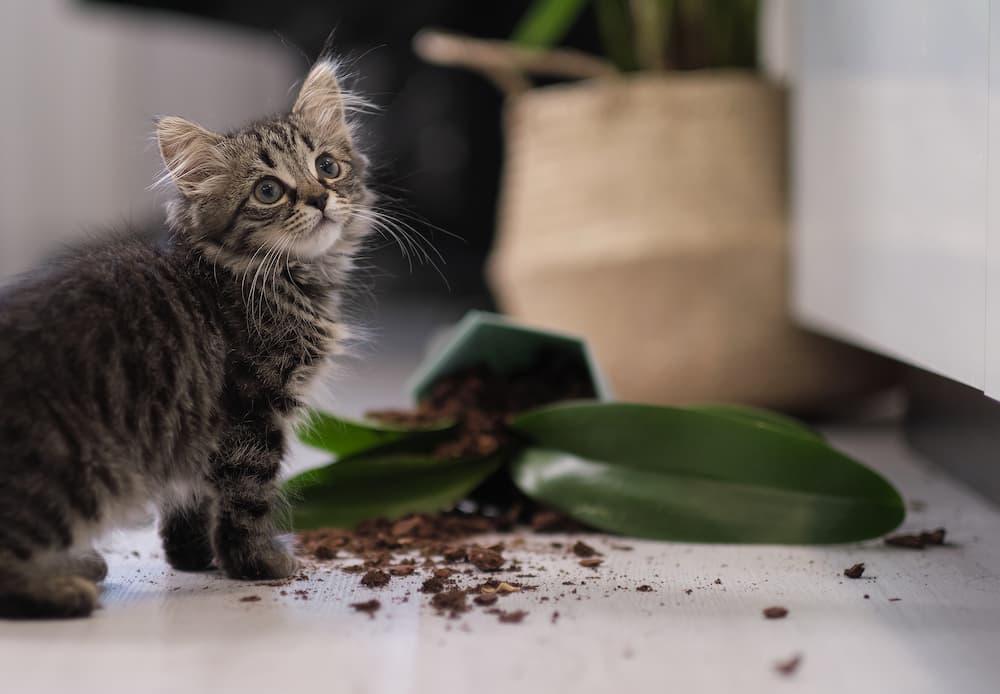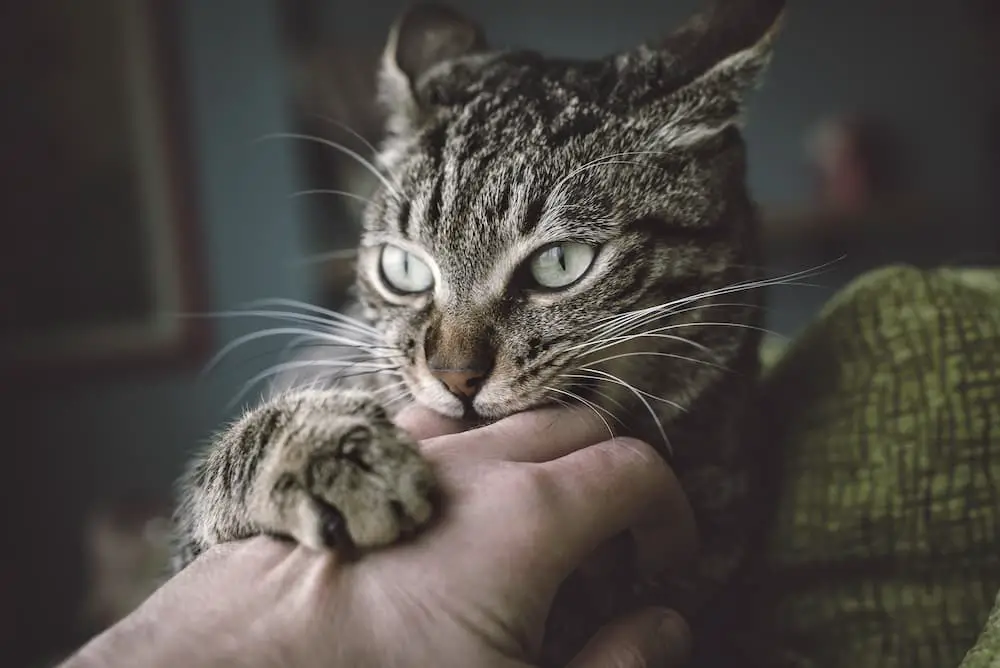by Dr. Ernie Ward
Habits form the foundation of our lives. The foods we eat, the time we sleep, and how we care for our bodies build the bedrock of good health. Daily choices also affect the well-being of our feline family members. The healthiest cats I serve as a veterinarian also have the healthiest lifestyles. Regular exercise and mental stimulation, wholesome nutritional choices, and simple preventive care are the top habits of the happiest cats I know. Let’s explore how you can ensure your cat stays in tip-top shape, full of purrs for years to come.
Healthy, Happy Habit 1 – Mind and Body
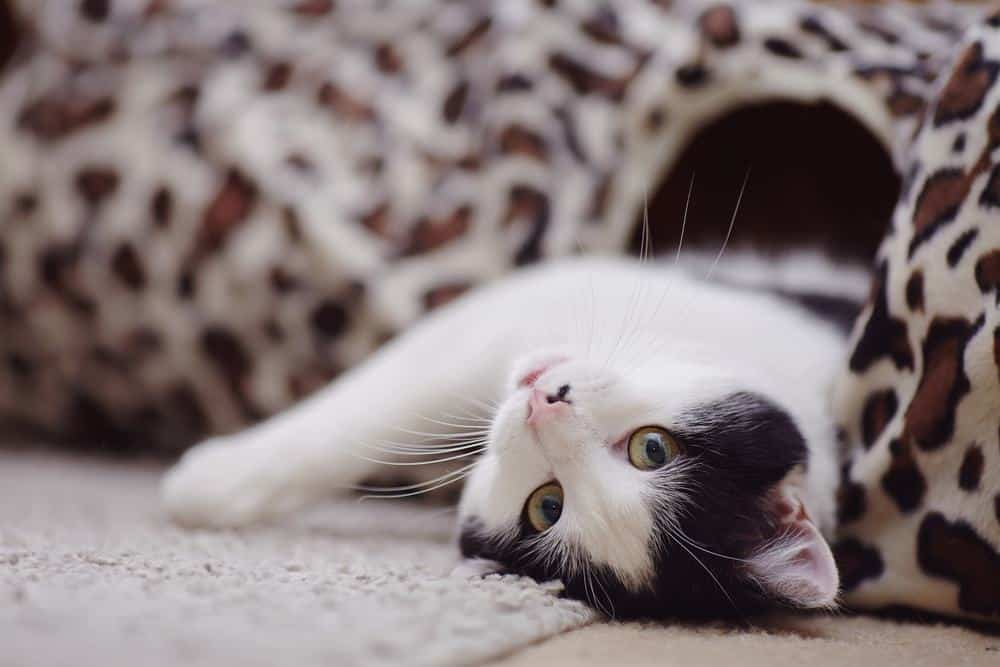 Your cat’s attitude, happiness, and playfulness is inextricably tied to its physical health. A cat suffering from chronic pain or illness is more likely to become depressed, aggressive, withdrawn, or unhappy. Our goal as stewards of our cat’s health is to strengthen their bodies, boost their immunity, and provide an enriched environment. Start by committing to once-a-day, five-minute play periods. This time can be spent chasing a feather duster, laser pointer, or hide-and-seek in a box. This playtime isn’t only to build strong bones and muscles; it’s designed to release your cat’s inner predator. Cats crave stalking, pouncing, and hunting; it’s in their DNA. I advise every cat to be fed using a “food puzzle.” This taps into your feline’s deep instinct to grapple, grab, and work for their kibble. I like food puzzles because they activate multiple physical and neurological systems to make eating an enriched and more meaningful experience for cats.
Your cat’s attitude, happiness, and playfulness is inextricably tied to its physical health. A cat suffering from chronic pain or illness is more likely to become depressed, aggressive, withdrawn, or unhappy. Our goal as stewards of our cat’s health is to strengthen their bodies, boost their immunity, and provide an enriched environment. Start by committing to once-a-day, five-minute play periods. This time can be spent chasing a feather duster, laser pointer, or hide-and-seek in a box. This playtime isn’t only to build strong bones and muscles; it’s designed to release your cat’s inner predator. Cats crave stalking, pouncing, and hunting; it’s in their DNA. I advise every cat to be fed using a “food puzzle.” This taps into your feline’s deep instinct to grapple, grab, and work for their kibble. I like food puzzles because they activate multiple physical and neurological systems to make eating an enriched and more meaningful experience for cats.
You can also engage your cat’s primal predator by playing chase, throwing balls or wads of paper, using remote-controlled toys, or a game I like called “hide the food.” Show your cat a couple of small bowls with their favorite food. Hide those bowls around the house when you leave. If the bowls are empty when you return, congratulate your wild tiger! If not, make the “holding place” more obvious next time. Happy “hunting!”
Another healthy habit is something I call “High: Low Feeding.” In simplest terms, alternate feeding your cat on an elevated service with floor level. Jumping and climbing engages your cat’s biggest muscles and stimulates complex problem-solving. Moving food and water bowls even a few feet can make feeding more fun for your cat.
For more adventurous felines, cat-specific walking harnesses are an option. I know cats that enjoy hikes, water sports, and travel. Before you embark on a three-day mountain hike with your kitty, have your cat checked out by your veterinarian, find out if there are local feline clubs or groups to join, and get proper safety gear. Adventuring with your cat is growing in popularity! Go make memories!
Healthy, Happy Habit 2 – Nurturing Nutrition
 Your cat’s body requires nourishing food to maintain optimal health. In fact, the most important decision you make each day for your cat is what you feed it. Food fuels the disease-fighting immune system, keeps a cat’s mental abilities sharp, and is vital to longevity. I typically prefer high-protein diets for most cats. Cats are obligate carnivores and require pure animal-sourced proteins to thrive. Chicken and oily fishes, such as salmon, are packed with essential nutrients and health-boosting omega-3 fatty acids. I’m especially excited to see leading pet food brands, like the Iams brand, focus on the unique nutritional needs of our cats by creating formulations rich in animal proteins, without adding soy, artificial preservatives, or dyes. In fact, Iams High Protein cat food contains high-quality protein – 84% of which comes from animal sources, which helps feed cats’ carnivorous nature and keep them ready to pounce, while providing a complete and balanced nutrition for healthy vitality.
Your cat’s body requires nourishing food to maintain optimal health. In fact, the most important decision you make each day for your cat is what you feed it. Food fuels the disease-fighting immune system, keeps a cat’s mental abilities sharp, and is vital to longevity. I typically prefer high-protein diets for most cats. Cats are obligate carnivores and require pure animal-sourced proteins to thrive. Chicken and oily fishes, such as salmon, are packed with essential nutrients and health-boosting omega-3 fatty acids. I’m especially excited to see leading pet food brands, like the Iams brand, focus on the unique nutritional needs of our cats by creating formulations rich in animal proteins, without adding soy, artificial preservatives, or dyes. In fact, Iams High Protein cat food contains high-quality protein – 84% of which comes from animal sources, which helps feed cats’ carnivorous nature and keep them ready to pounce, while providing a complete and balanced nutrition for healthy vitality.
Whatever you choose to feed your cat, be sure to pay special attention to protein. Felines evolved on a steady diet of animal proteins and research supports high protein diets are optimal for health and well-being. Before changing diets, ask your veterinarian for specific recommendation or advice based on your cat’s individual history and needs. Because nutrition is so important to sustaining good health, find a veterinarian interested in openly discussing your cat’s diet and nutrition. Today’s veterinarians have more nutritional expertise than ever and are eager to help you create a nutritional plan that works for you and your cat.
Wholesome nutrition also includes helping your cat maintain a healthy weight. Nearly 60% of U.S. cats are overweight, putting them at increased risk of type 2 diabetes, kidney disease, high blood pressure, crippling arthritis, and many forms of cancer. Ask your veterinarian to perform a body condition score (BCS) for your cat and calculate how many calories you should feed. Ditch the “all-day buffet” mega-bowl feeding and transition to a healthier, individual, two- to three-times feeding using a food puzzle.
Healthy, Happy Habit 3 – Preventive Care Counts
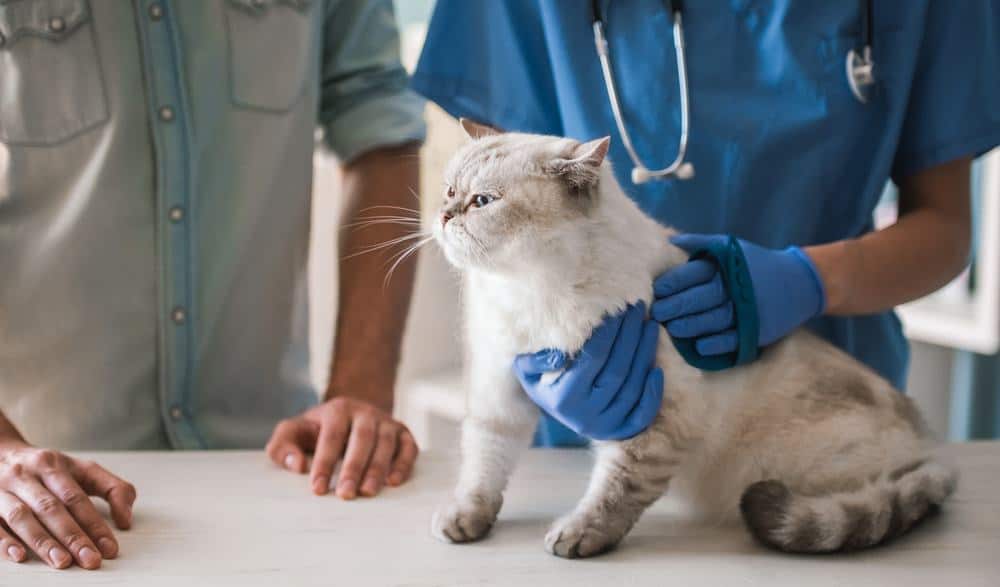 The final healthy habit for keeping your cat happy is also the easiest: visit your veterinarian at least once a year. In addition to immunizations, heartworm, flea, and tick preventives, and intestinal parasite checkups, your veterinarian is searching for hidden problems that are often easy to overlook in our busy homes. Blood and urine tests provide a peek into internal organs and allow early diagnosis that can cure disease. Cats evolved to hide symptoms of illness in order to evade predators. If you wait until you see signs of illness in cats to seek help, the disease process is often advanced and serious. In over 30 years of clinical practice, I’ve uncovered thousands of problems the owners had no idea existed. In many cases, early diagnosis was the difference between prolonged suffering and death and cure and quality of life. Once a year with your veterinarian is often all it takes to help keep your cat healthy and happy.
The final healthy habit for keeping your cat happy is also the easiest: visit your veterinarian at least once a year. In addition to immunizations, heartworm, flea, and tick preventives, and intestinal parasite checkups, your veterinarian is searching for hidden problems that are often easy to overlook in our busy homes. Blood and urine tests provide a peek into internal organs and allow early diagnosis that can cure disease. Cats evolved to hide symptoms of illness in order to evade predators. If you wait until you see signs of illness in cats to seek help, the disease process is often advanced and serious. In over 30 years of clinical practice, I’ve uncovered thousands of problems the owners had no idea existed. In many cases, early diagnosis was the difference between prolonged suffering and death and cure and quality of life. Once a year with your veterinarian is often all it takes to help keep your cat healthy and happy.
These are only three healthy, happy habits of cats I’ve observed during my career. A caring, supportive human and animal family, low-stress, and loads of love should also be included on this list. Evaluate your daily habits and commit to building a strong foundation every day for both you and your cat. Here’s wishing you purrs and playfulness for many, many years!
1-Based on 2016 Association for Pet Obesity Prevention Pet Obesity Survey Results
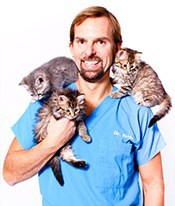 Dr. Ernie Ward, Veterinarian, America’s Pet Advocate, Writer
Dr. Ernie Ward, Veterinarian, America’s Pet Advocate, Writer
Dr. Ernie Ward has spent his entire career advocating and encouraging better care for animals. He is known internationally for improving veterinary medical standards, creating a higher quality of life for animals and promoting healthier habits for pets and people. He has thus earned the title as “America’s Pet Advocate.” Dr. Ward’s unifying theme is: Do what is in the pet’s best interest. This theme he has carried out throughout his career as a veterinarian Dr. Ward founded the Association for Pet Obesity Prevention in 2005. He helps raise awareness of the dangers of overweight dogs and cats. In 2010, Dr. Ward wrote Chow Hounds: Why Our Dogs Are Getting Fatter. America’s Pet Advocate has been featured in several news outlets including, The New York Times, Reader’s Digest, Canadian Vet, Fox News, and Good Morning America. Dr. Ward is a spokesperson for Iams.

